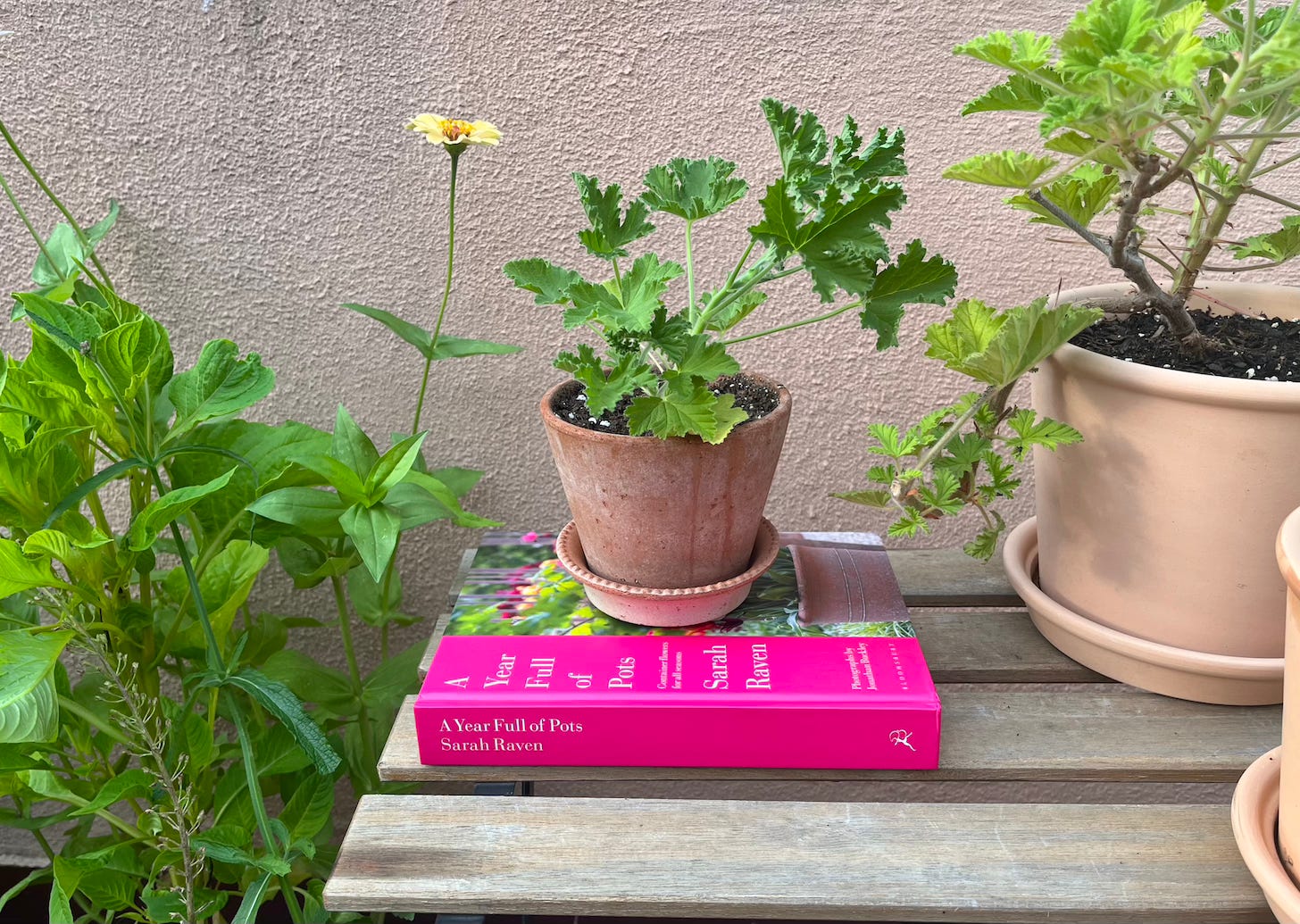
In March I did a post on my favorite books for small space flower growing, and I included Sarah Raven’s A Year Full of Flowers, even though it’s not particularly geared towards the container gardener. But I love Sarah Raven’s ethos of gardening. Her books are equal parts horticultural knowledge and artistic sensibility. She tells you not only how to grow the plant but how to style it. A healthy plant is important, of course, but maybe not any more important than how it looks in the garden.
It turns out that I wrote that blog post too soon, because not too much longer after I posted it Sarah Raven’s latest book came out, and it’s all about container gardening. I’d known about and was excited for A Year Full of Pots, but at first I wasn’t sure what sort of book it would be. Sarah, of course, gardens on a huge piece of land (huge to me, at least!), with plenty of ground space for the beautiful flowers she grows. Do you know how sometimes in the garden magazines the sections about container gardening will be kind of frilly and insubstantial? An afterthought, almost? I’d never describe a Sarah Raven book as insubstantial, ever, but I guess that I thought that her new book might not be as exciting as A Year Full of Flowers, in which flowers are planted, naturally, in the ground.
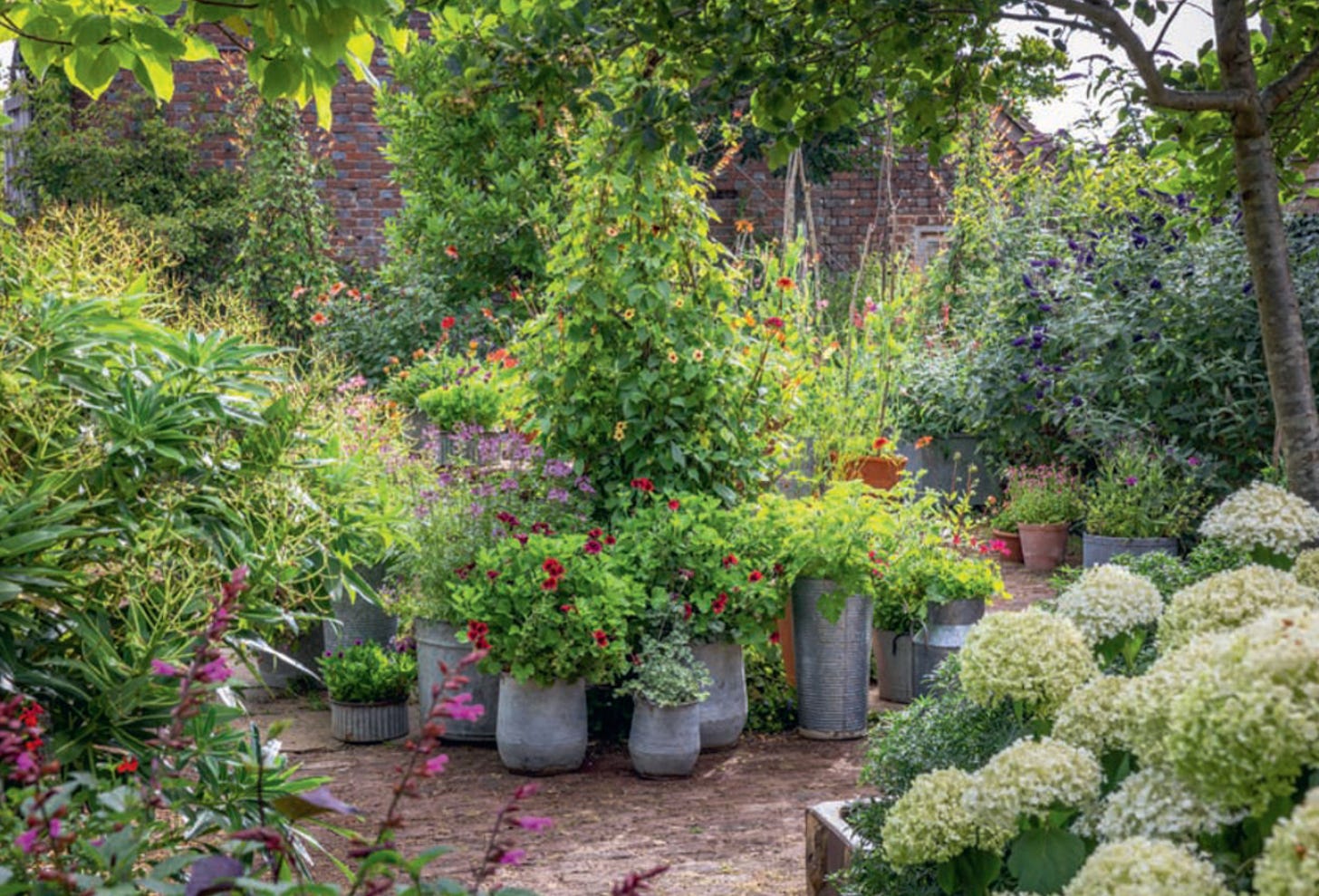
But are flowers planted in containers really less exciting than flowers planted in the ground? Ever since we moved away from Portland and from our garden there I’d looked at container gardening as something restrictive, smaller, and somehow less creative than what I’d thought to be ‘proper’ gardening. But this year I’ve had a change of heart. I’ll do a post on this later, but suffice it to say that living in an urban environment that’s filled with tiny gardens—whether they be in pots, window boxes, on balconies, or even in tree pits—has shown me that container gardening doesn’t have to be boring, and that it can actually be the most creative type of gardening of all.
Sarah Raven’s book is very much in that spirit. She doesn’t see growing in a pot as a limitation at all. Aesthetically, it can even be a plus. She’s all about choosing the right plant for the right container, and of course there are so many lovely containers to choose from. And so many plants that can be planted in them! These combinations aren’t just an afterthought for her—not just a few hanging baskets of petunias on the porch. She may have a big garden, but she integrates the pots into the landscape, and they add so much to it. I think it’s funny that I’d been a bit doubtful about a book on container gardening written by someone with access to a big garden, because now I don’t see it that way at all. I was the one who saw container gardening as something limiting. If anything, the fact that Sarah Raven has a big garden yet still devotes so much it to pots shows just how exciting it can be.
Plants I want to grow (or am already growing)
Part of the reason I thought container garden was less than exciting was because of the traditional plants recommended for growing in pots. I wanted to grow cut flowers—I didn’t want to grow what I’d considered to be boring, bedding-y annuals. But it turns out that there are so many kinds of flowers that work great in pots, and the book has lists and lists of them for every season. Sarah includes varieties of traditional garden plants (dahlias and zinnias and cosmos and the like) that are compact and container-friendly, which is especially helpful for a person like me who is hellbent on planting everything I used to plant in the ground into pots, with mixed results. For instance, I’ve found that I can still plant a tall cosmos like ‘Apricotta’ in a pot, and it’s doing ok, and I can get cut flowers from it, but the compact ‘Rubinato’ does look nicer in a pot. I will say that I disagree with Sarah on the subject of roses, which she suggests you stick to planting in the ground. Are they better in the ground than in pots? I’m sure they are, but sometimes you have to work with what you’ve got.
My favorite of her recommendations are the kinds of plants I’d either never heard of or never gave much thought to planting before. Some are on my list for the next growing season, and some have already made their way into this year’s garden:
Nemesia: I’d never heard of this one, but it works so well in a pot— so dainty, its flowers looking like tiny little snapdragons. And I did find a plant, believe it or not, at Lowes! So it must not be too rare, though I do want to try to grow it from seed next year, too.
Viola: This one had always been on my “too boring” list, but why? Pansies, too. So many colors and sizes, and such a good producer. I bought a tiny purple viola earlier in the year, and it’s still blooming away, at the moment very bushy in a larger pot, and somehow the flowers have become a lavender white. I love it.
Erigeron Karvinskianus: So many nicknames for this one—Santa Barbara Daisy, Mexican Fleabane—I’m not sure what to call it but I do know I want to get a packet of seeds for next year. I love how Sarah has it growing in tiny pots that she uses as centerpieces on her outdoor table.
Pelargoniums: I already had a few of these and love them; I have some scented geraniums but I’m very much on the lookout for this Regal pelargonium called Lord Bute. I think it would make a great houseplant.
Tulips, Daffodils, and all the spring favorites: I’ve planted these, too, but always in the ground and never in pots, and I think they look even prettier in pots, so why not give it a try for next year?
Display inspiration
This is a container gardening book that’s all about aesthetics—no practical advice on growing vegetables in old tires or urban garden hacks here—so of course the pots you plant in and how you display them are going to be of the utmost importance. Sarah sells some gorgeous pots on her site, but I know that she’s all about buying secondhand, too, and I definitely don’t think you need to spend a lot to get something beautiful. At least not in the days of Facebook Marketplace.
The book provides plenty of inspiration for lovely displays. There are great big containers planted with great big plants, and there are lots of tips for planting combinations. The “Thriller, Filler, Pillar, Spiller” and “Bride, Bridesmaid, Gatecrasher” methods—they’re all here. So are color palette suggestions and what Sarah calls her “pot recipes.” There’s a little something for every garden in this book. I love all the great big displays of pots planted up like herbaceous borders, but I also love the dainty little pots filled with dainty little flowers just as much. The idea of using them to decorate a table or to line an outdoor plant shelf is really lovely and something that’s new to me. A really refreshing way to reframe the idea of growing flowers in containers.






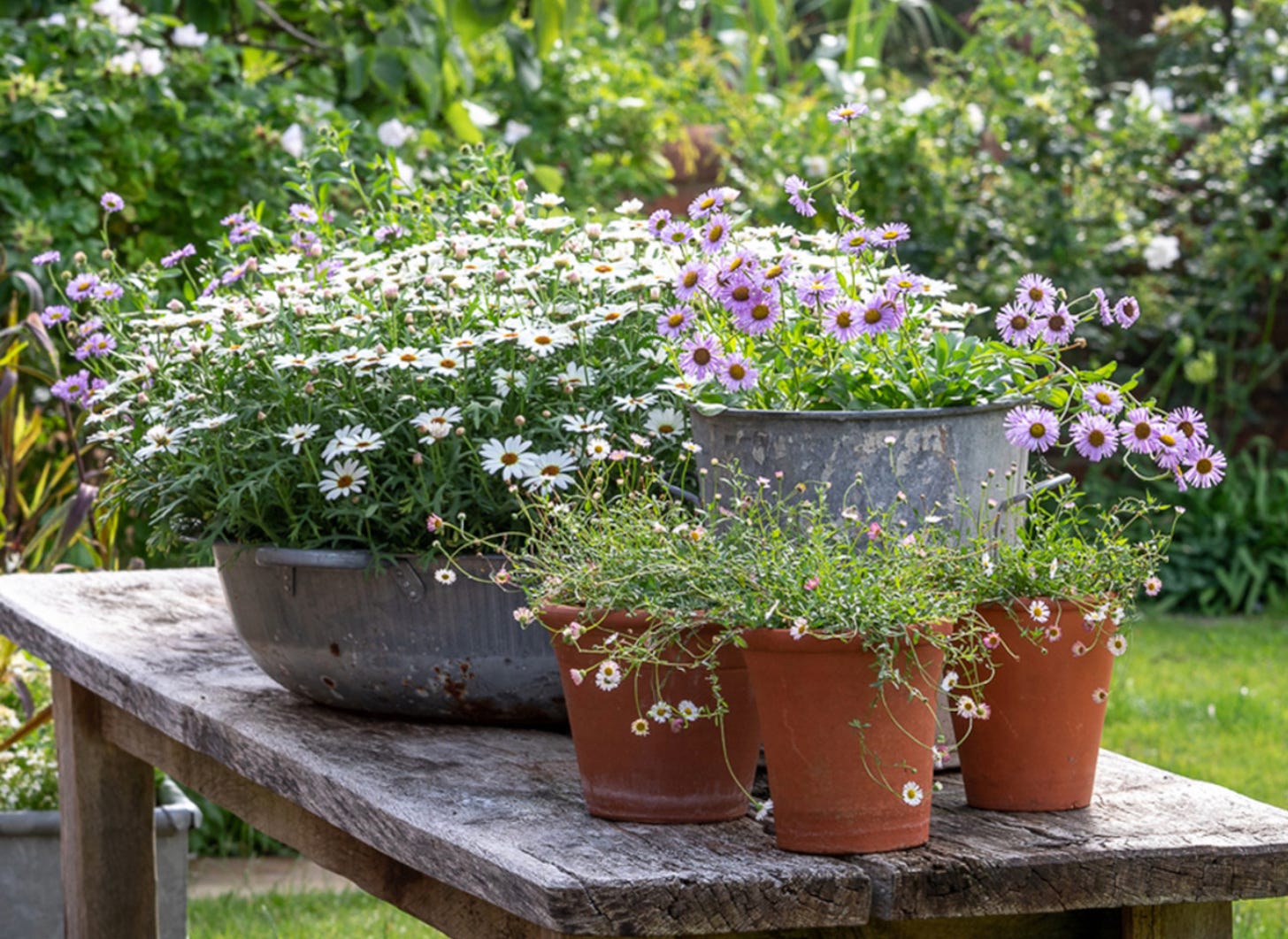
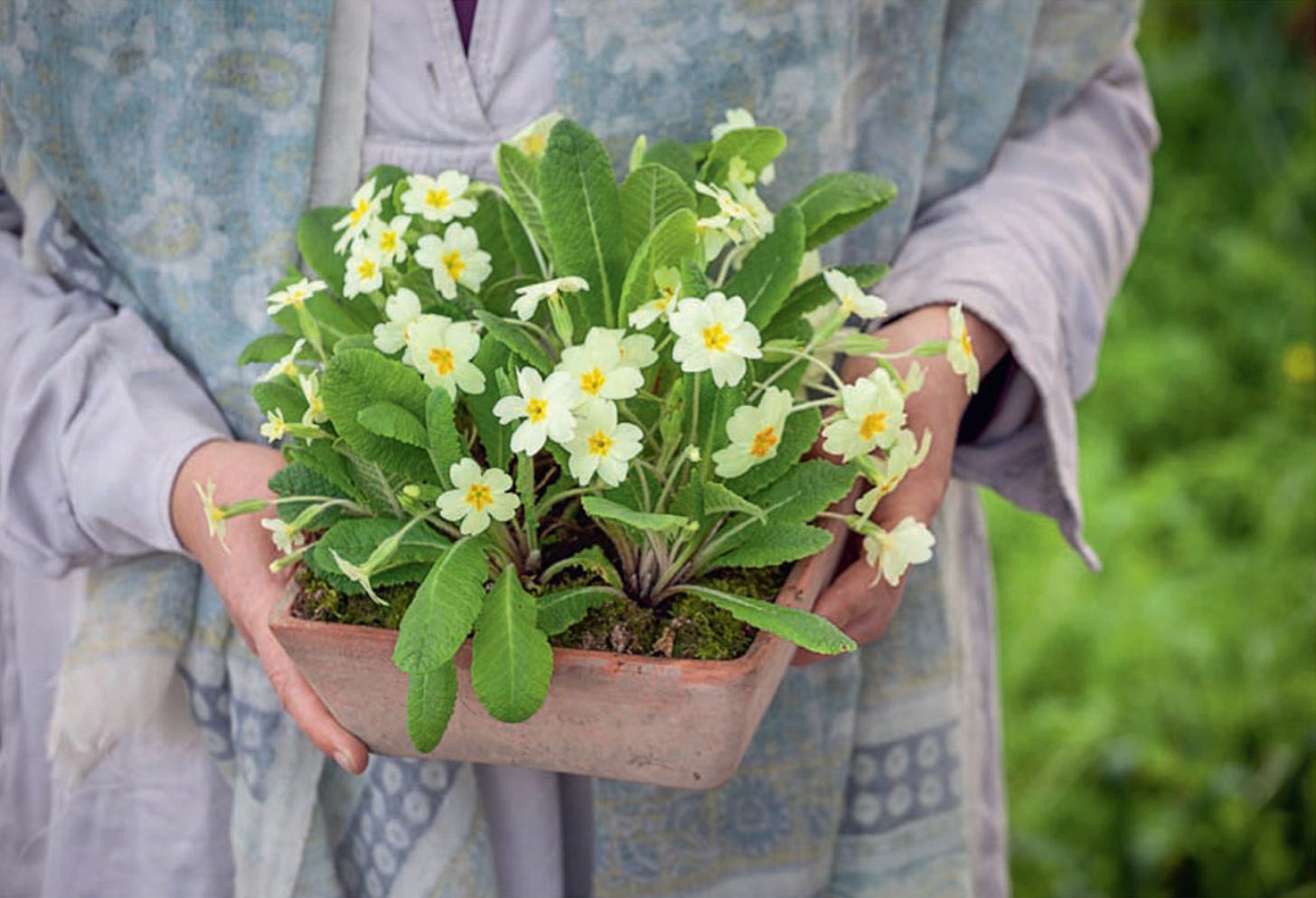

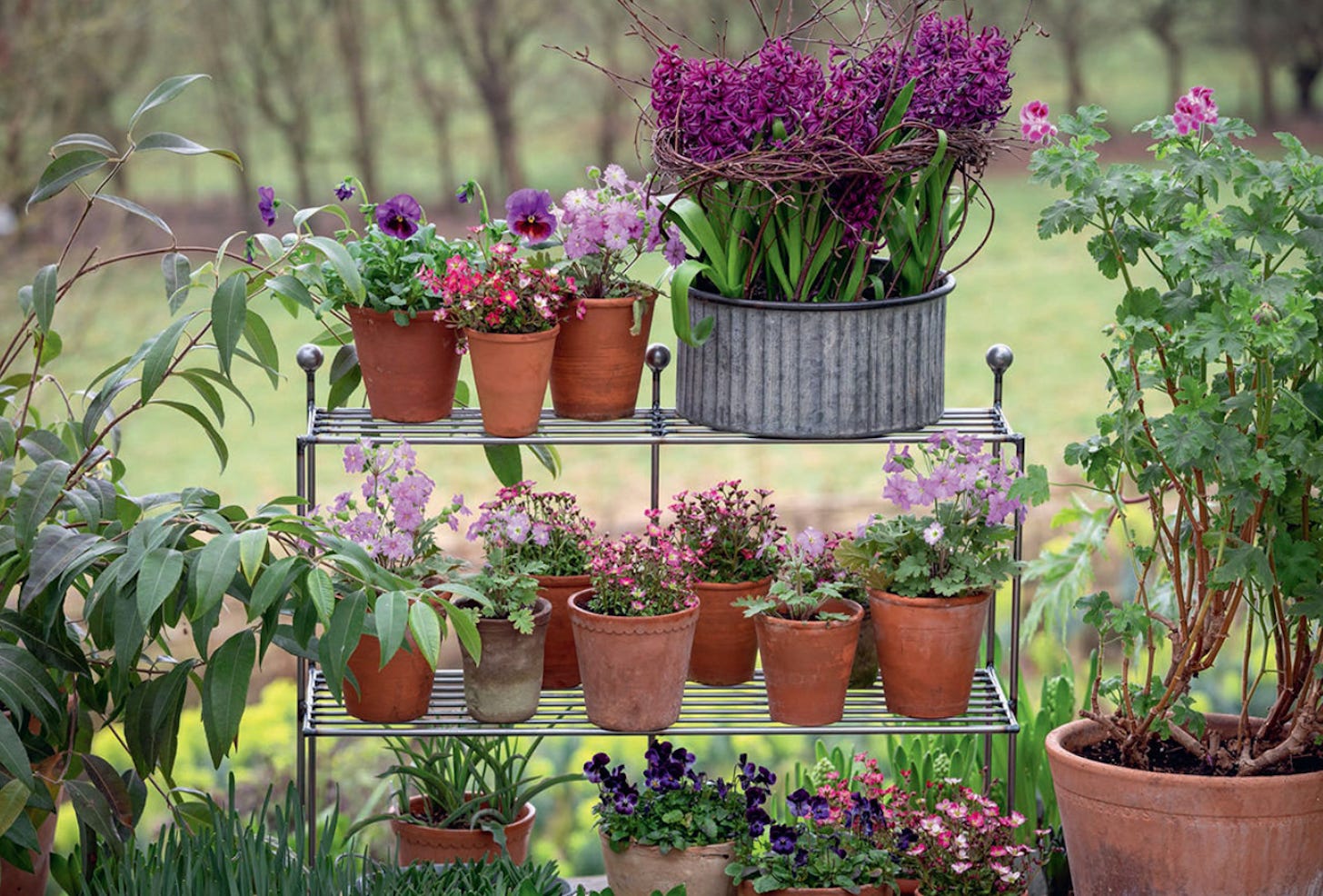
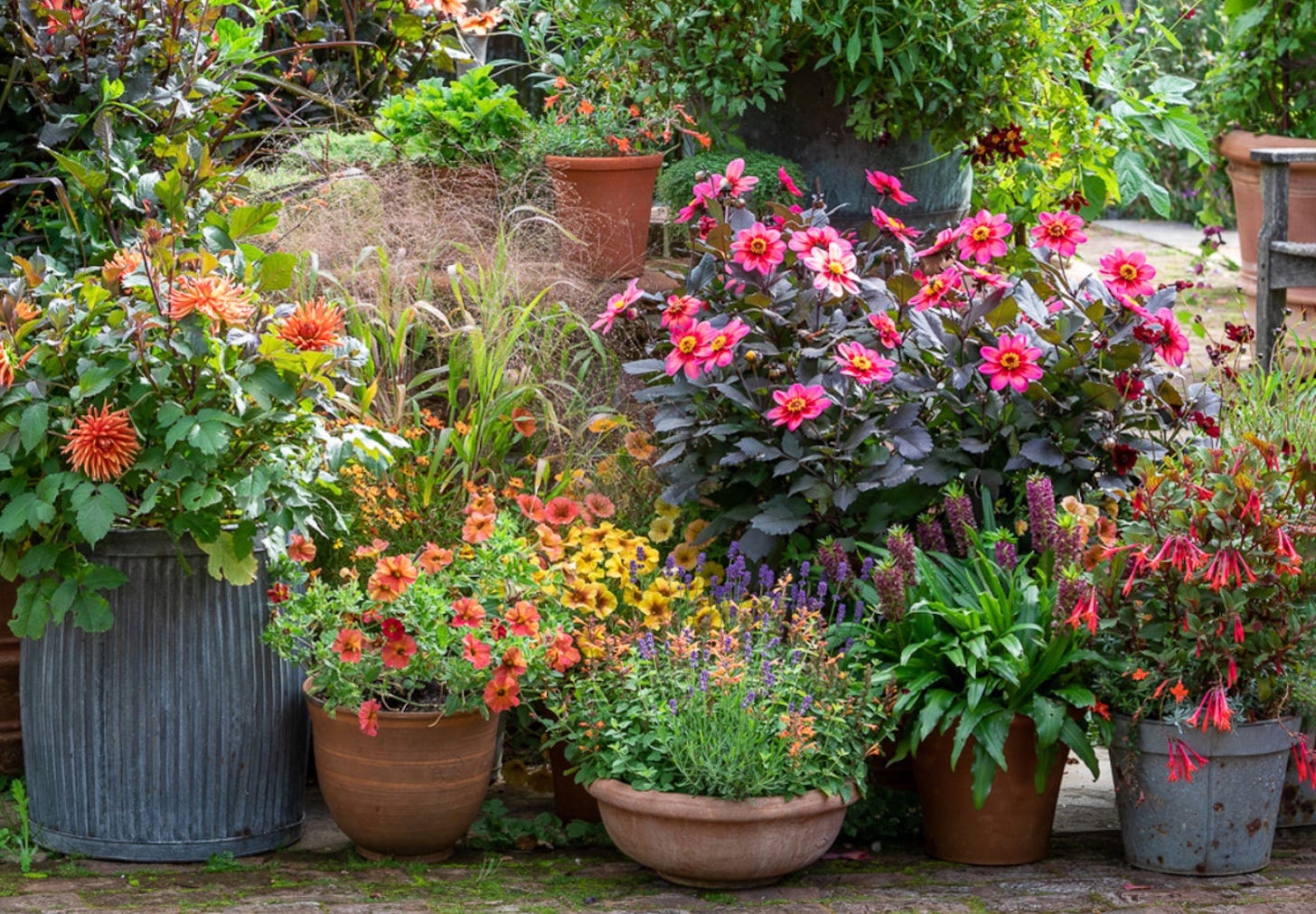

Man, this is silly to admit, but I never thought flowers/plants might not grow as well in pots as opposed to the ground. I assumed they were similar to fish and their bowls. (It's said that a fish will tend to grow in size relative to it's environment.) Flowers and plants are the opposite though? Each type or species needs a certain amount of space? Very cool.
Another thing that stood out to me was not only the idea of arranging flowers and plants in a container, but then arranging those containers into their own arrangement. Saying it out loud makes so much sense, but I'd never thought about it that way either. This is such a wonderful way to think about it. Like getting a box of crayons for the first time after having used a pencil for so many years.
Very excited to see what you come up with in the next year with both flowers AND pots! (May the Stoop Gods shine down on you.)